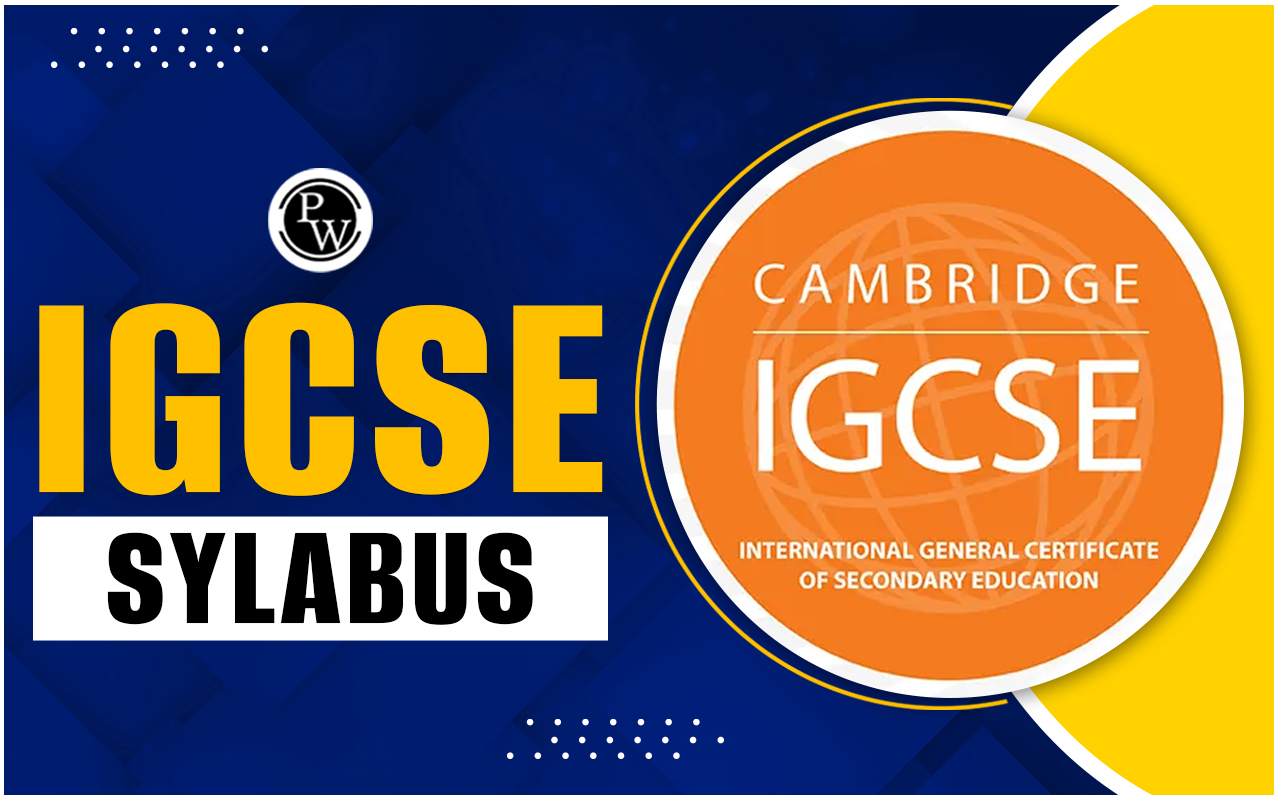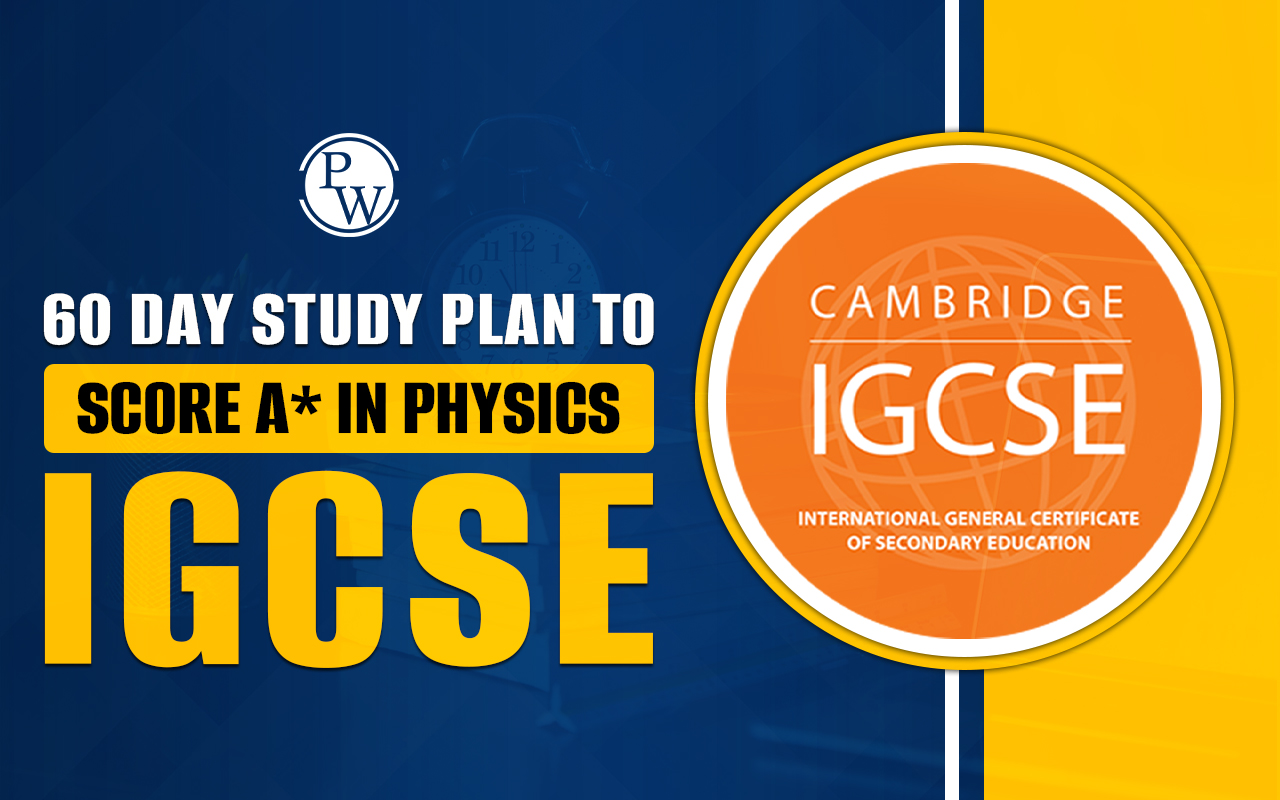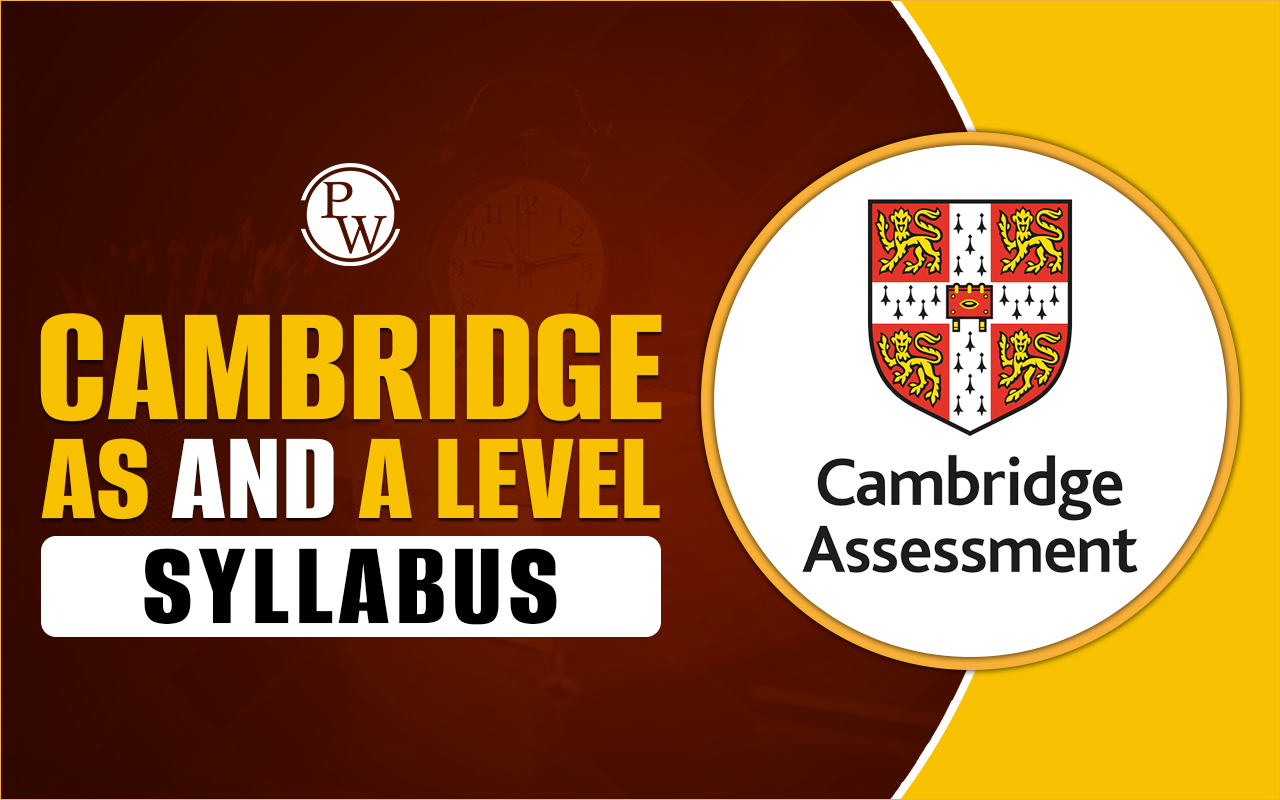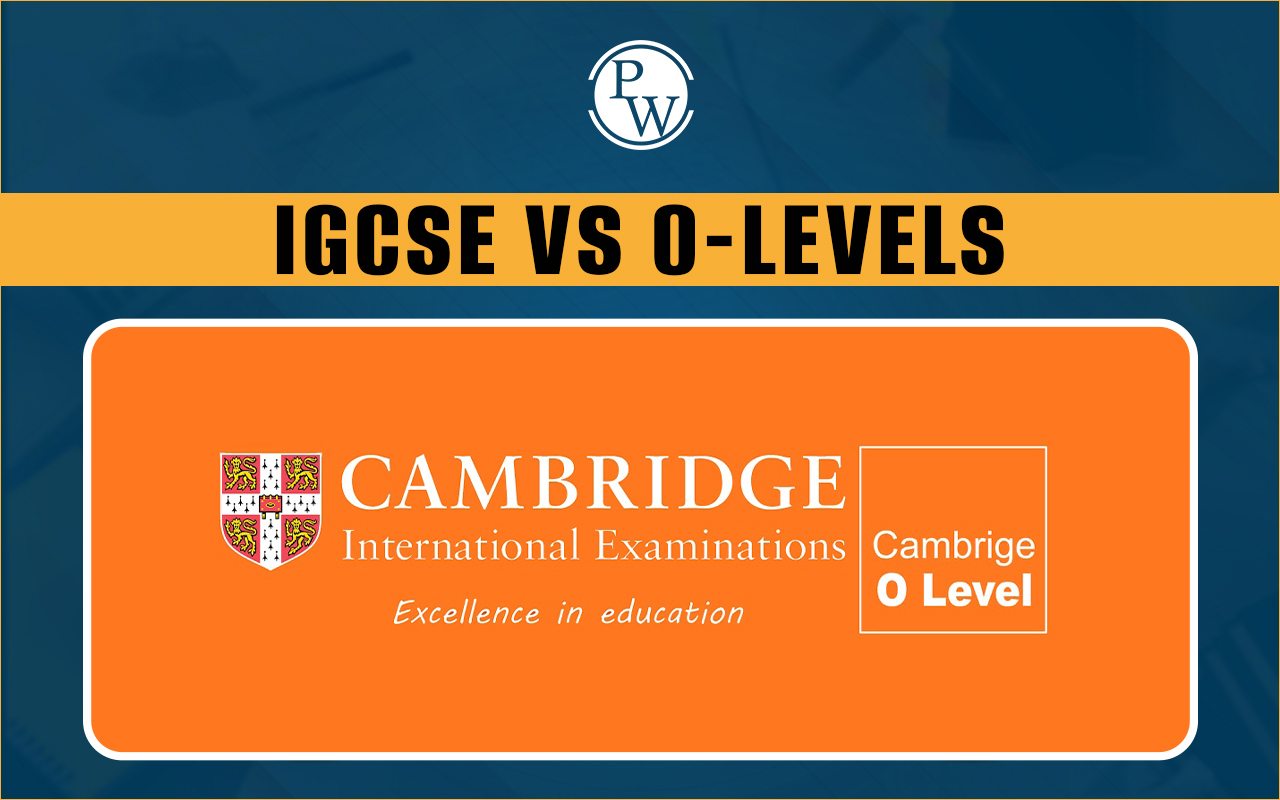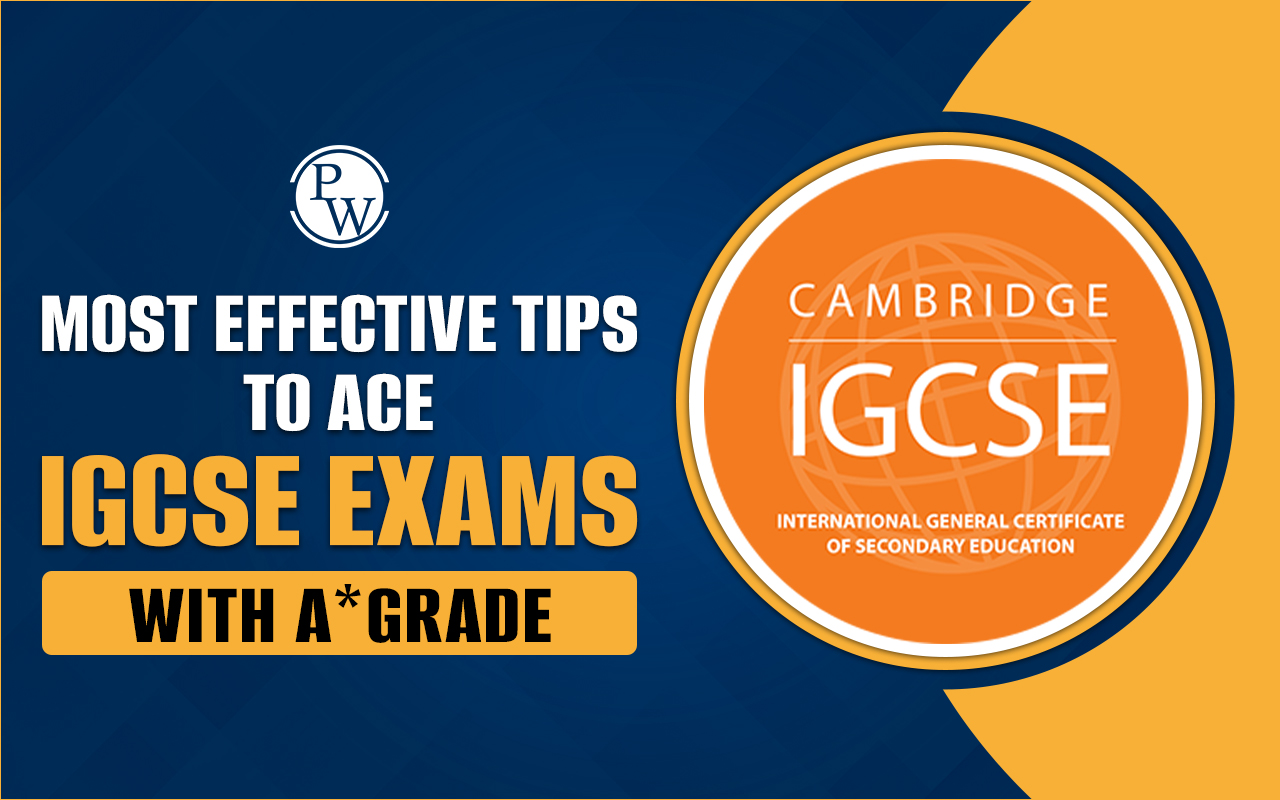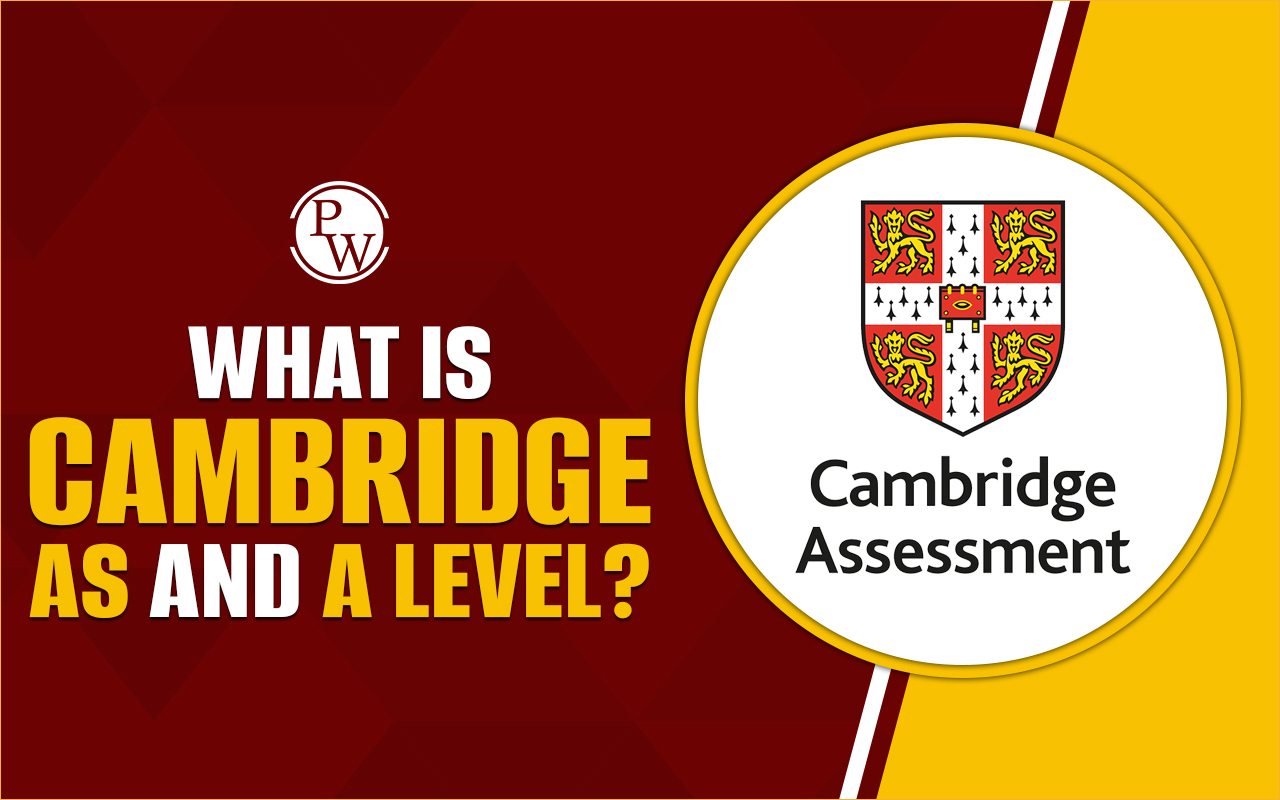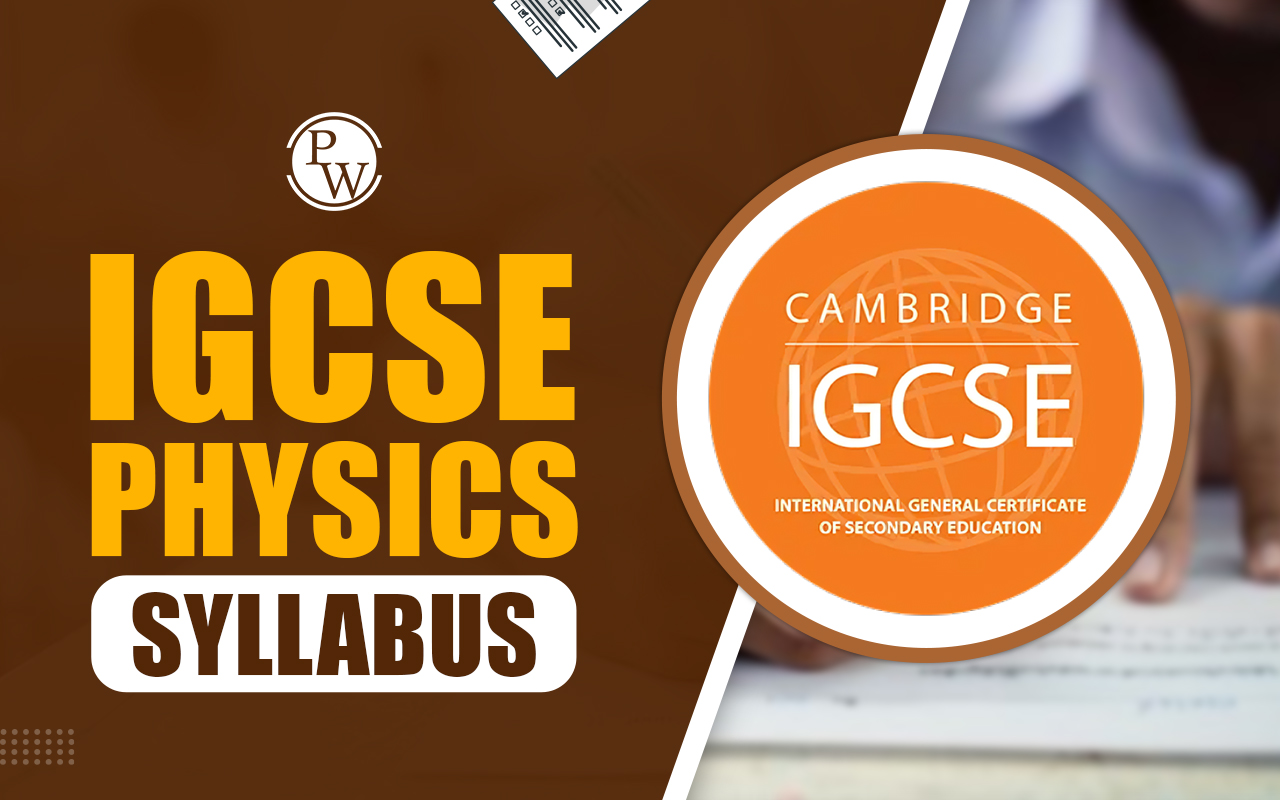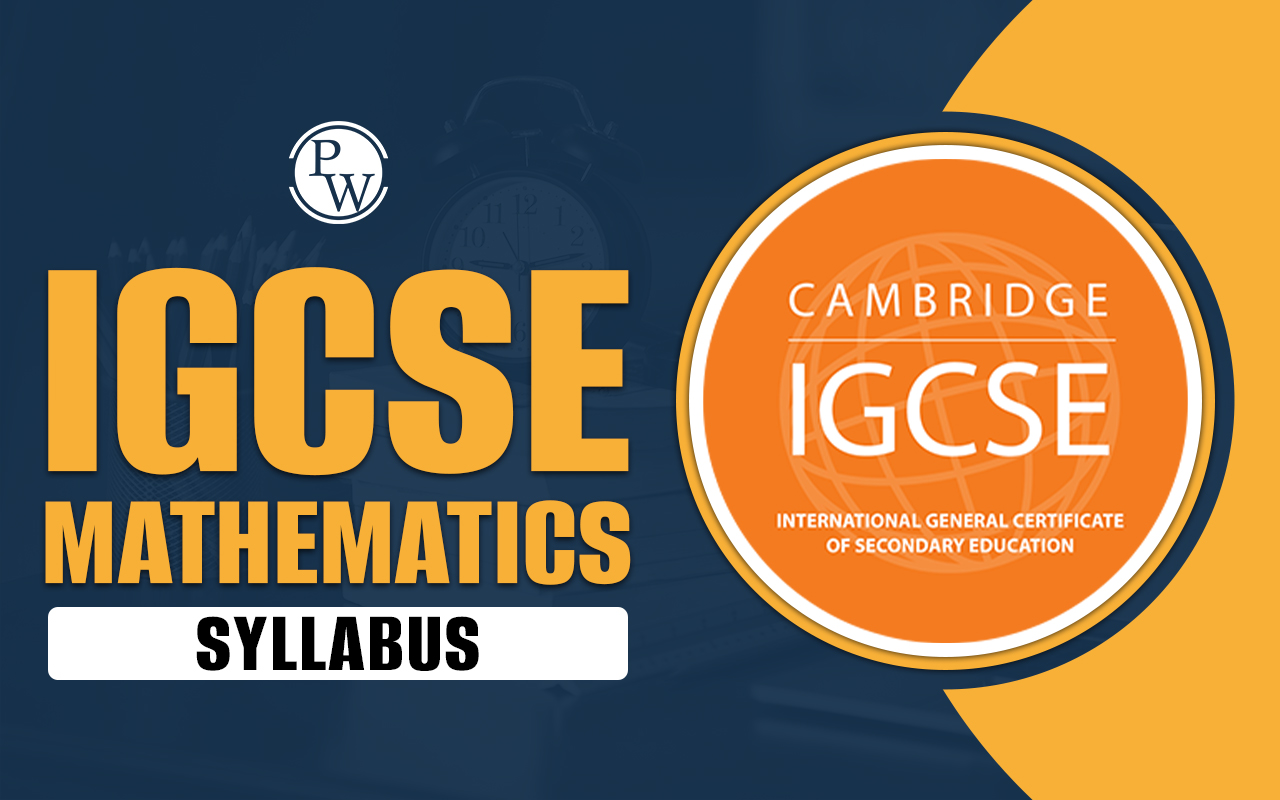
Cambridge Grade Thresholds : The Cambridge IGCSE grading system can feel confusing, especially for students and parents who are new to it. One important part of this system is Cambridge Grade Thresholds. These thresholds show the minimum marks needed to get certain grades like A*, B, or C.
Knowing how these thresholds work helps students set clear goals, stay focused, and plan their studies better. Here we will explain everything about Cambridge Grade Thresholds to make exam preparation easier and more effective.What Are Cambridge Grade Thresholds?
Cambridge Grade Thresholds are the minimum marks a student needs to achieve a particular grade in their exam. For example, if the threshold for an A grade in a Physics paper is 28 marks out of 40 , then scoring 28 or more will secure an A. If the threshold for a C grade is 22 marks , then scoring 22 will earn a C. Here’s an example from the November 2023 Physics exam (Component 21) :- 28 marks or more = Grade A
- 22 marks or more = Grade C
- 17 marks or more = Grade E
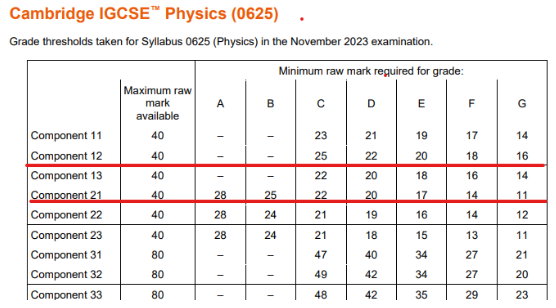
How Are Cambridge Grade Thresholds Decided?
Cambridge Grade Thresholds are not set before the exams—they are carefully decided after the exams are marked. The process ensures that grades are awarded fairly, no matter how difficult or easy the paper was. Here’s how it works:Step 1: Analyzing the Exam
After the exam is marked, Cambridge examiners review the overall performance of all students. They check:- How challenging the exam questions were.
- How students performed compared to expectations.
Step 2: Adjusting for Difficulty
The thresholds are adjusted based on the exam’s difficulty:- If the exam was harder than expected , thresholds are lowered. This means students can achieve higher grades with fewer marks.
- If the exam was easier than expected , thresholds are raised to maintain consistency across different exam sessions.
Most Effective Tips to Ace Cambridge IGCSE Exams with A* Grade
Step 3: Finalizing the Thresholds
Once the adjustments are made, the final Cambridge Grade Thresholds are published. These thresholds ensure that grades reflect both the performance of the student and the difficulty of the exam. For example, in the Physics November 2023 exam (BZ Option) :- To get an A * Overall, students needed at least 146 marks out of 200 .
- For a B grade , the threshold was 106 marks .

Examples of Cambridge Grade Thresholds
To understand Cambridge Grade Thresholds better, let’s look at some real examples. These examples show how raw scores in exams are translated into grades based on the thresholds set for that session.Example 1: Physics November 2023 Exam (Component 21)
In the Physics November 2023 exam, the thresholds for Component 21 (worth 40 marks) were:- 28 marks or more = A grade
- 22 marks or more = C grade
- 17 marks or more = E grade
- 29 marks , they would earn an A grade because they exceeded the 28-mark threshold.
- 20 marks , they would get a D grade because it falls below the 22-mark threshold for a C.
Example 2: Physics November 2023 (BZ Option)
Some subjects, like Physics, are graded based on multiple components combined. For instance, the BZ Option includes Components 23, 43, and 53, with a total of 200 marks . The thresholds for this option were:- A * = At least 146 marks .
- B grade = At least 106 marks .
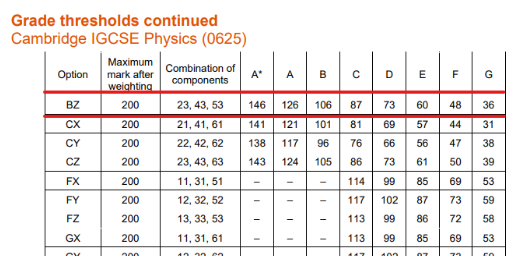 A student’s overall grade depends on their total score across these components, not just one paper. For example:
A student’s overall grade depends on their total score across these components, not just one paper. For example:
- A student scoring 150 marks across all components would earn an A* grade.
- Another student with 108 marks would get a B grade, just above the 106-mark threshold.
Example 3: Physics November 2023 (FX Option)
In the FX Option , which includes Components 11, 31, and 51, thresholds were adjusted differently:- C grade = At least 114 marks .
- D grade = At least 99 marks .
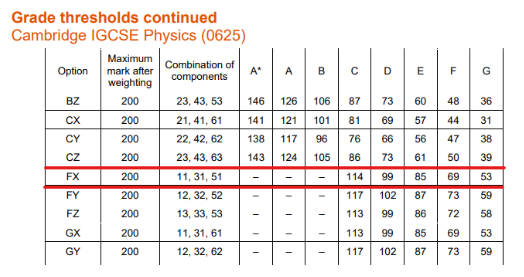 In this option, A* and A grades were not available, so the thresholds focused on other grades.
In this option, A* and A grades were not available, so the thresholds focused on other grades.
Why Are Cambridge Grade Thresholds Important?
Cambridge Grade Thresholds are much more than just numbers—they are a key tool for students, parents, and teachers to understand how grades are awarded. Here’s why they matter so much:1. Clear Goals for Students
Cambridge Grade Thresholds show exactly how many marks are needed for each grade. This makes it easier for students to set clear goals and focus on their preparation.- Example : If a student knows they need 28 marks out of 40 for an A grade in Physics, they can aim for that score in practice tests and plan their revision accordingly.
2. Motivation and Focus
Knowing the thresholds helps students stay motivated because they have a clear target to reach. It also gives them a sense of progress as they get closer to achieving their goal.- For students aiming to improve from a C to a B, the thresholds show how much effort is needed to cross that gap, keeping their focus sharp.
3. Fair Grading for All
The thresholds are adjusted based on the difficulty of the exam, ensuring fairness for everyone.- Harder Exam? The thresholds are lowered so students aren’t penalized unfairly.
- Easier Exam? The thresholds are raised to maintain grading consistency.
4. Smarter Exam Preparation
Cambridge Grade Thresholds allow students to plan their studies more effectively. They can identify areas where they are close to the threshold and focus on improving in those topics.- Example : A student scoring 20 marks in practice tests for a Physics paper (where 22 marks are needed for a C) knows they are just 2 marks away and can concentrate on specific weak areas.
5. Transparency in the Grading System
For parents and teachers, Cambridge Grade Thresholds provide a clear and transparent way to understand how grades are awarded. This helps in guiding students better and reducing unnecessary stress or confusion about results.6. Confidence Boost
Knowing what marks are required for each grade can reduce exam anxiety. Students can go into the exam knowing exactly what to aim for, which helps them feel more in control of their performance.7. Helps with Future Planning
Cambridge Grade Thresholds also help students prepare for future academic paths.- High grades like A* and A are often required for advanced qualifications such as A Levels or IB.
- Understanding thresholds now sets students up for long-term success by encouraging consistent effort.
Using Cambridge Grade Thresholds to Plan Exam Preparation
Cambridge Grade Thresholds are more than just guidelines for grading—they can be a valuable resource for planning your studies. Here’s how students can use them to prepare smarter and achieve their goals:1. Set Clear and Realistic Targets
Thresholds give students a clear idea of how many marks they need for their desired grade. This helps them set achievable targets for each subject.- If the threshold for a C grade in Physics is 22 marks out of 40, and a student is currently scoring 18 marks in practice tests, they know they need to improve by just 4 marks to reach the next grade.
2. Focus on Weak Areas
By comparing their current scores to the thresholds, students can identify subjects or topics where they are falling short and focus their efforts there.- If a student consistently misses the threshold for a C in Mathematics due to poor performance in algebra, they can spend extra time practicing algebra questions.
3. Practice with Past Papers
Using past papers alongside Cambridge Grade Thresholds is one of the most effective ways to prepare.- IGCSE Solve papers under timed conditions and check how your raw score compares to the thresholds.
- This helps you understand how close you are to your target grade and where you need to improve.
- Tip : Mark your papers strictly using mark schemes to get a realistic idea of your performance.
4. Track Your Progress
Keep a record of your scores from practice papers and compare them to the thresholds.- Create a simple chart to see how your performance improves over time.
- Adjust your study plan if you notice certain areas are not improving as much as others.
5. Plan for Multiple Components
For subjects with multiple components (like Physics or Business Studies), plan your preparation to maintain consistency across all parts.- If a subject has two components worth 100 marks each, scoring 70 in one component but only 40 in another may not be enough for a top grade.
- Aim to balance your scores across all components to meet the cumulative threshold.
Common Misconceptions About Cambridge Grade Thresholds
While Cambridge Grade Thresholds are a valuable tool for understanding and preparing for exams, several misconceptions can confuse students and parents. Let’s clear up some of these misunderstandings:1. Misconception: Cambridge Grade Thresholds Are Fixed
Reality : Cambridge Grade Thresholds are not static; they change every exam session. Thresholds are adjusted based on how challenging or easy the exam is. For harder exams, thresholds are lowered to make it fairer for students. Easier exams have higher thresholds to maintain consistency. Example : In one session, an A grade might require 28 marks, but in another, it could need 30 marks based on exam difficulty.2. Misconception: All Subjects Have the Same Grade Thresholds
Reality : Thresholds vary across subjects because each subject is unique in its question style and content. Even within a subject, different components may have different thresholds. Example : The threshold for a C in Physics might be 22 marks, while in History, it could be 25 marks, reflecting the differences in exam structure and marking.3. Misconception: Meeting One Threshold Guarantees the Grade
Reality : Achieving the threshold in one component doesn’t automatically mean you’ll get the grade. For subjects with multiple papers, your overall score across all components must meet the cumulative threshold. Example : In the Physics BZ Option, an A* requires 146 marks out of 200 across all components, not just one paper.4. Misconception: Thresholds Are Known Before Exams
Reality : Thresholds are finalized only after exams are marked. This allows examiners to adjust for difficulty and ensure fairness across sessions. Example : Students can use thresholds from past years as a guide but shouldn’t assume the same numbers will apply for their session.5. Misconception: Thresholds Are Only Important for Top Grades
Reality : Thresholds are just as important for all grades, whether you’re aiming for A* or simply passing with a C or D. They help set clear and realistic goals for every student. Example : A student aiming for a C in Mathematics can use thresholds to focus on the 22 marks needed instead of worrying about the higher thresholds for A or A*. Cambridge Grade Thresholds are an important part of the IGCSE grading system. They help students set clear goals, give parents a better understanding of how grades work, and ensure a fair process for everyone. By understanding these thresholds, students can focus on their weak areas, prepare better, and feel confident about their exams. At PW International Boards , we make it easier for students to ace the IGCSE curriculum . Our expert tutors provide simple explanations, personalized lessons, and targeted strategies to help students succeed. Whether it’s understanding thresholds, solving past papers, or improving in tough subjects, we are here to guide you.| International Boards Other Related Topics | |
| IGCSE Chemistry Syllabus | IGCSE Biology Syllabus |
| How to Choose the Cambridge IGCSE Subjects | Difference Between IGCSE VS ICSE |
Cambridge Grade Thresholds FAQs
Do thresholds change every year?
Yes, thresholds change based on the difficulty of the exam. Harder exams have lower thresholds, and easier ones have higher thresholds.
Are thresholds the same for all subjects?
No, thresholds vary between subjects and even between different components of the same subject.
Can meeting a threshold in one paper guarantee a grade?
No, your overall score across all components of a subject must meet the cumulative threshold to secure a grade.
How can Cambridge Grade Thresholds help in exam preparation?
They help students set clear goals, track their progress, and focus on improving specific areas to achieve their target grades.
🔥 Trending Blogs
Talk to a counsellorHave doubts? Our support team will be happy to assist you!

Check out these Related Articles
Free Learning Resources
PW Books
Notes (Class 10-12)
PW Study Materials
Notes (Class 6-9)
Ncert Solutions
Govt Exams
Class 6th to 12th Online Courses
Govt Job Exams Courses
UPSC Coaching
Defence Exam Coaching
Gate Exam Coaching
Other Exams
Know about Physics Wallah
Physics Wallah is an Indian edtech platform that provides accessible & comprehensive learning experiences to students from Class 6th to postgraduate level. We also provide extensive NCERT solutions, sample paper, NEET, JEE Mains, BITSAT previous year papers & more such resources to students. Physics Wallah also caters to over 3.5 million registered students and over 78 lakh+ Youtube subscribers with 4.8 rating on its app.
We Stand Out because
We provide students with intensive courses with India’s qualified & experienced faculties & mentors. PW strives to make the learning experience comprehensive and accessible for students of all sections of society. We believe in empowering every single student who couldn't dream of a good career in engineering and medical field earlier.
Our Key Focus Areas
Physics Wallah's main focus is to make the learning experience as economical as possible for all students. With our affordable courses like Lakshya, Udaan and Arjuna and many others, we have been able to provide a platform for lakhs of aspirants. From providing Chemistry, Maths, Physics formula to giving e-books of eminent authors like RD Sharma, RS Aggarwal and Lakhmir Singh, PW focuses on every single student's need for preparation.
What Makes Us Different
Physics Wallah strives to develop a comprehensive pedagogical structure for students, where they get a state-of-the-art learning experience with study material and resources. Apart from catering students preparing for JEE Mains and NEET, PW also provides study material for each state board like Uttar Pradesh, Bihar, and others
Copyright © 2025 Physicswallah Limited All rights reserved.
Get App
